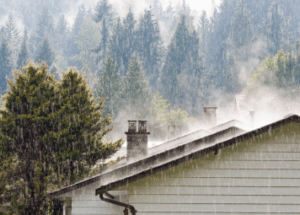No ‘ifs’ or ‘buts’, a roof replacement is one of the biggest home improvement projects you can undertake. However, this certainly should not deter you from replacing your roof – especially if it is showing signs of damage! Even if your roof is in relatively good working condition, sometimes age and other factors mean a new roof might be necessary (customers often ask us if a new roof is worth the investment – read what we have to say about it here). Nonetheless, a roof replacement is a considerably large project, which is why it is important you spend as much time as you can researching every aspect of the project – from roofing material to shingle color, to the home improvement contractor you choose to complete the job. To help you on your roof replacement journey, we have put together this handy list of the do’s and don’ts to make the process smoother and easier for you.
The Material of Your Roof
Do’s
- Do take the time to consider the different roofing materials available. You do not have to replace your existing roof with the exact same roofing material. It is a good idea to discuss with your contractor the options available to you that fit with your budget and area you live.
- Do choose a look you like. Roofs last between 20 to 30 year so you want one that looks appealing to maximize your curb appeal. Different materials come in different styles and colors.
- Do consider an extra layer. In some instances, a second layer of roofing can extend the life of your new roof, so make sure you ask your contractor about your options.
Don’ts
- Don’t go against the homeowners association (HOA) rulees. Some HOAs have regulations that forbid certain materials, colors or styles.
- Don’t add extra layers without first checking structural integrity. If you are considering another layer, it is vital you check the structural integrity of your home and roof first as a multi-layer roof adds significant weight. This is also something to check if your contractor is considering leaving the existing roof in place and laying down the new roof on top.
Your Roofing Contractor
Do’s
- Do check references. The best way to know if you are hiring a quality roofing contractor is by seeking out what other clients have said. Look online, ask around or simply request customer testimonials from the contractor.
- Do request a detailed estimate. In the estimate, make sure the contractor has included the materials, time, labor and projected start and finish date. Get it all in writing.
Don’ts
- Don’t allow a contractor to talk you into taking shortcuts. Sometimes, some contractors try to lower costs by cutting corners on materials. This is never a good idea! You will end up paying for it down the track because your home will potentially require new decking, new fascia or even another roof. This is especially true when it comes to the installation of felt paper starter shingles, flashing, or proper sealants and caulk.
Preparing for Your New Roof
Do’s
- Do protect your yard. When installing a new roof, contractors often throw old shingles down onto the ground, which can easily damage your plants and shrubberies. While some contractors will protect your yard with tarps, others may not, it is up to you to look after them yourself.
- Do prepare your home. With an installation crew walking around on your roof, using hammers and drilling, you will experience some vibrations and shaking in your home. It is a good idea to remove any pictures from your walls or put away any fragile items that may fall from shelves.
Don’ts
- Don’t allow children or pets near the worksite. It is important to keep young kids and animals away from the site at all times as materials thrown from the roof, or even loose nails in the yard, can cause a lot of damage.
Inspecting Your Replacement Roof
Do’s
- Do request safety as a top priority. While it is important to look at the contractor’s licenses, bonding, and insurance policies before they begin, it is also vital you request nothing less than optimum safety. Make sure your contractor follows safety regulations at all times.
- Do ensure the materials are what you paid for. While you have no reason not to trust your contractor, it is still wise to check the roofing material when they are delivered to your house.
Don’ts
- Don’t allow ventilation to be blocked. Though most roofing contractors know not to do this, it is a good idea to check with your contractor that they are not blocking off any important ventilation systems from your home during the installation process. This can cause major headaches over the long run, such as ice damming or overheated/melting shingles. Ultimately, this will reduce your roof’s lifespan.
{{cta(‘8c8ebe87-3dbb-47b1-b0ea-08ea42cf678a’,’justifycenter’)}}



